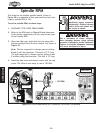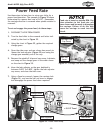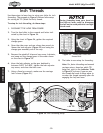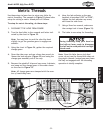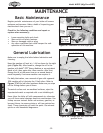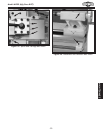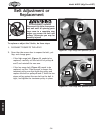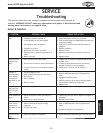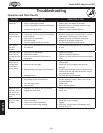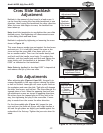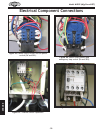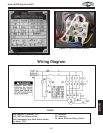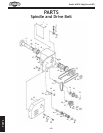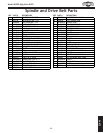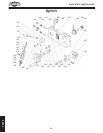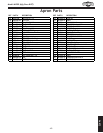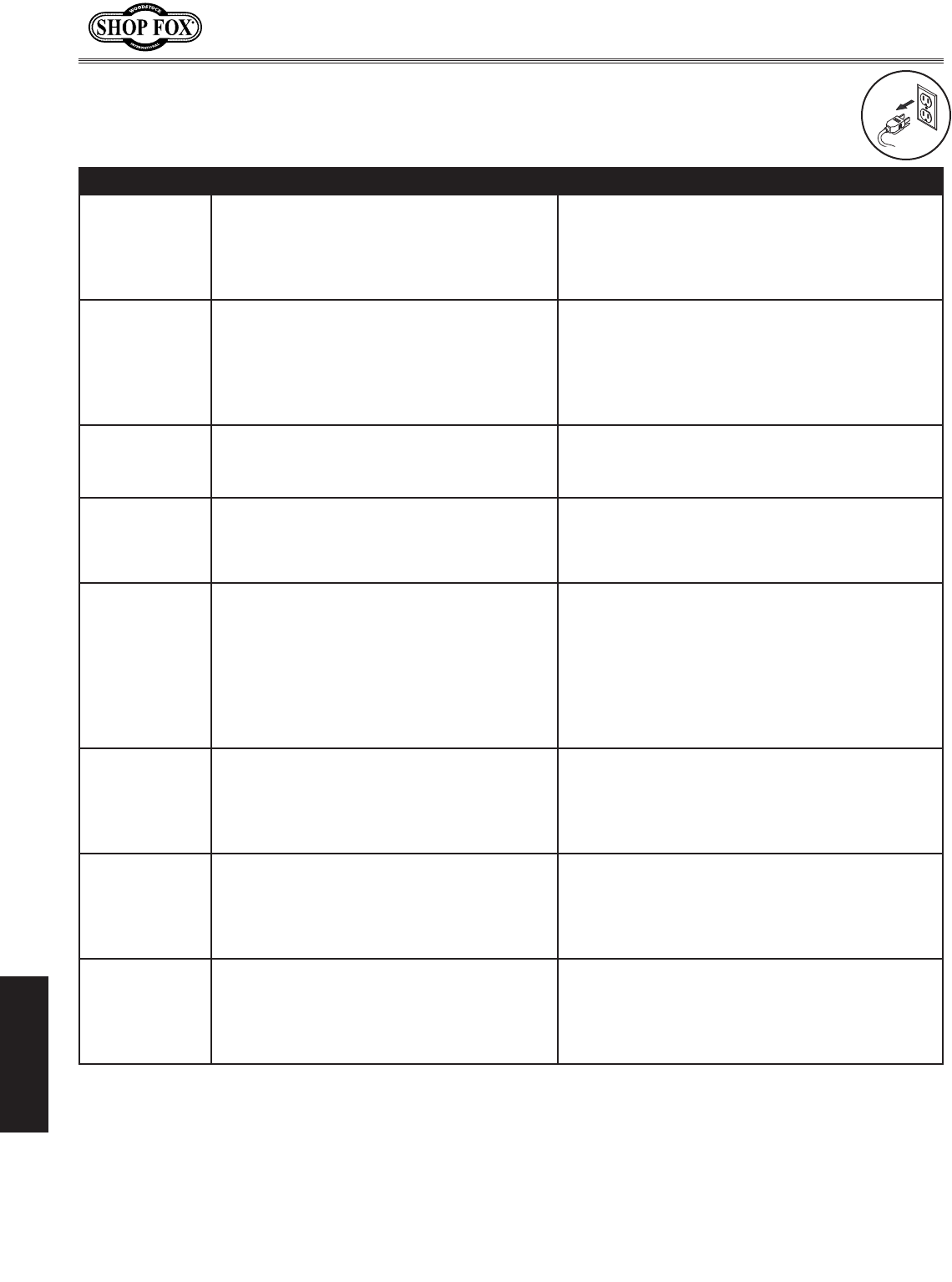
-36-
Df[\cD('00D]^J`eZ\/&'.
J<IM@:<
JPDGKFD GFJJ@9C<:8LJ< :FII<:K@M<8:K@FE
Lathe vibrates
excessively.
1. Workpiece is unbalanced.
2. Worn or broken gear present.
3. Chuck or faceplate has become unbalanced.
4. Spindle bearings at fault.
1. Reinstall workpiece so it is centered.
2. Inspect gears and replace if necessary.
3. Rebalance chuck or faceplate; contact a local
machine shop for help.
4. Tighten or replace spindle bearings.
Cutting tool
vibrates exces-
sively during cut-
ting.
1. Tool holder not tight enough.
2. Cutting tool sticks too far out of tool holder;
lack of support.
3. Gibs are out of adjustment.
4. Dull cutting tool.
5. Incorrect spindle speed or feed rate.
1. Check for debris, clean, and retighten.
2. Reinstall cutting tool so no more than 1/3 of the
total length is sticking out of tool holder.
3. Tighten gib screws at affected component.
4. Replace or re-sharpen cutting tool.
5. Use the recommended spindle speed.
Can't remove
tool from
tailstock.
1. Quill had not retracted all the way back into
the tailstock.
1. Turn the quill handwheel until it forces taper out
of quill.
Cross slide, com-
pound rest, or
carriage feed has
lash.
1. Gibs are out of adjustment.
2. Handwheel is loose.
3. Lead screw mechanism worn or out of
adjustment.
1. Tighten gib screw(s).
2. Tighten handwheel fasteners.
3. Tighten any loose fasteners on lead screw mecha-
nism.
Cross slide, com-
pound rest, or
carriage feed
handwheel is
hard to move.
1. Gibs are loaded up with shavings or grime.
2. Gib screws are too tight.
3. Backlash setting too tight (cross slide only).
4. Bedways are dry.
1. Remove gibs, clean ways/dovetails, lubricate, and
readjust gibs.
2. Loosen gib screw(s) slightly, and lubricate
bedways.
3. Slightly loosen backlash setting by loosening the
locking screw and adjusting the spanner ring at
the end of the handle.
4. Lubricate bedways and handles.
Bad surface fin-
ish.
1. Wrong RPM or feed rate.
2. Dull tooling or poor tool selection.
3. Too much play in gibs.
4. Tool too high.
1. Adjust RPM and feed rate.
2. Sharpen tooling or select a better tool for the
intended operation.
3. Tighten gibs.
4. Lower the tool position.
Inaccurate turn-
ing results from
one end of the
workpiece to the
other.
1. Headstock and tailstock are not properly
aligned with each other.
1. Realign the tailstock to the headstock spindle bore
center line.
Carriage won't
feed, or is hard
to move.
1. Gears are not all engaged or broken.
2. Gibs are too tight.
3. Loose screw on the feed handle.
4. Lead screw shear pin has sheared.
1. Adjust gear positions or replace.
2. Loosen gib screw(s) slightly.
3. Tighten.
4. Correct for cause of shear pin breakage, and
replace shear pin.
Fg\iXk`feXe[NfibI\jlckj
KiflYc\j_ffk`e^



